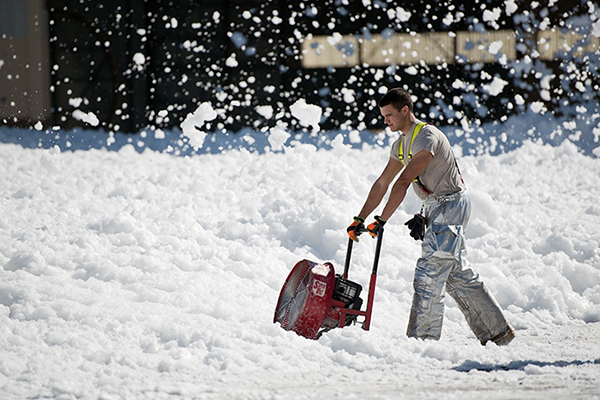
Keeping buildings, occupants and businesses safe is a full-time job for business continuity managers and facilities managers.
The risks are many, ranging from weather-related to man-made, some sudden, most unavoidable. With plans in place, however, some emergencies can be averted, most managed and nearly all recovered from.
Experts have advice, strategies and examples, and we’ve gathered some of the best below.
Test Your Tech
Back in 2012, Rita Tatum of Facilities Net wrote a four-part series on how FMs manage new technology risk, and that advice still stands.
While technology saves manpower and money, it can also bring risks, she says, especially when it’s a first generation system. You need to test applications vigorously before putting them to use. This is especially true when it comes to systems that are crucial to the life and safety of facility occupants.
“You don’t want to have your HVAC locked out because you are getting a false alarm on a duct detector,” for example. The best practice is having “termination devices tested many times before you let them control critical functions.”
Use a Risk Matrix
“A risk matrix can be extensive, tailored for specific projects,” writes Lemelle Johnson at IFMA. Even the simplest matrix provides project managers highlights as to three primary matters:
- Risk identification
- Risk occurrence probability
- Impact of an occurrence on the project
The matrix usually also contains a mitigation plan that sets out an action that can be taken to reduce the risk in the first place. Facilities managers can use risk matrixes, as well.
The example IFMA chart runs through the risk of asbestos being discovered in a building. The impact of such a discovery would be extremely high, while the risk of discovering the same would depend much on the location and age of the building, and in this case the probability is rated unlikely. The mitigation plan would be to test the area in question well in advance of the renovation project in order to be able to plan for the timely removal of any asbestos found.

Material Matters
Another example of identifying and reducing risk is with respect to the choice of material, in this case, glass. Dale Kerr, a building consultant in Toronto, says the type of glass used in balcony guards, for instance, is crucial when it comes to safety. While you can’t prevent glass from breaking, you can choose glass that causes less injury when it does break.
“In situations where injury due to breakage is a concern, tempered glass is typically used,” Kerr writes in Condo Business, part of the REMI Network. “Because of the stresses in the glass, when tempered glass breaks, it breaks into tiny crystals with relatively blunt edges that are far less likely to cause injury. For this reason, and because of its improved strength, tempered glass is used for balcony guards.”
Disaster from a Distance
Disaster can strike even when your own facility is not actually involved. Janelle Penny at Buildings.com writes about a lightning strike that caused a fire at a manufacturing plant. Two companies that relied on the products made by that plant were heavily impacted. One had a predetermined response plan and stayed in business; the other reported a $1.68 billion loss and merged with a competitor.
It’s the Law
Bo Mitchell, founder of 911 Consulting, reminds employers that all employees are required by law to be trained for emergencies in the workplace and that training must take place annually. “Every day in the United States,” Mitchell writes, “fourteen people fail to go home from work to their families, and nearly five million are seriously injured on the job.” He lists the procedures that organizations are required by federal law to have in place as being:
- Evacuation/Emergency Action Plan
- Fire Prevention Plan
- Supervisor training
- Employee training
To those, Mitchell adds another nine (just in the compliance section), including first-aid training and disabled evacuation. He adds more with regard to foreseeable circumstances (which includes workplace violence prevention and theft prevention) and loss reduction and risk management (such as detection of unauthorized audio and video recording devices).

Availability is Not Optional
Eric Chabrow, Executive Editor at GovInfoSecurity and InfoRiskToday, took a look at last July’s trio of outages at three major American institutions — the New York Stock Exchange, United Airlines and the Wall Street Journal — all within a period of a few hours. Flights were canceled and delayed at United, trading stopped for more than 3 hours at the NYSE, and the WSJ website directed readers to a temporary site.
Although first assumed to be a cyber attack, Chabrow writes at Bank Info Security that all were caused by technical glitches.
The lesson here is clear.
“NYSE, United Airlines, the Wall Street Journal and all other organizations,” writes Chabrow, “need an effective, well-tested business continuity plan to function in today’s fast-paced world. Availability is critical; it’s not an option.”
Business Continuity
And it’s not just when computer glitches occur that you need a business continuity plan. Jim Mitchell, director at eBRP Solutions, writes that in cases of building damage or other business interruption, a recovery strategy should be implemented to get them back up and running as soon as possible.
If a portion of a building is damaged, a facility manager can determine where crucial personnel should be moved and initiate repairs. FMs “can be invaluable during any disruption because they also know (or are responsible for) critical support functions,” Mitchell writes.
These include:
- Physical security
- Food services
- Logistics (shipping/mail)
- Reporting to landlords and buildings owners
Coordinating and communicating with trade services and suppliers is within the usual scope of the facilities management department. These contacts become extremely important when an emergency situation occurs, and should be contained within a business continuity plan in the event the FM is unavailable.

Mitigating Risk
FMs have specific knowledge that can help mitigate risk, Mitchell says. If a generator is being used during a sudden power outage, for example, the facilities manager knows the capacity, so primary functions and processes can be prioritized.
When making a shelter-in-place plan, a facilities manager “should have the best understanding of the most structurally safe areas of the building,” writes Mitchell, and can also plan evacuation meeting points so that building occupants are evenly distributed.
Contingency Plans
While making contingency plans takes time and money, not having precautions in place can be costly in more ways than one. “Without a proper plan to cope with a disaster situation,” Jay Shelton, senior vice president of risk management services at Assurance writes at Facility Executive, “lawsuits can arise from tenants, distributors, or employees claiming negligence.”
He says to think of the disaster plan as a “living document.” Review it annually, and adapt it seasonally or as new threats arise. Because all disasters (weather-related and man-made) need to be considered, the plan should contain information on all fronts: utilities backup, disaster recovery services, backup facilities, and so on.
Remember to Review
The seasonal review should not be overlooked. A winter storm in northern states can bring the threat of roof collapse, so snow load design is something an FM should be aware of.
An additional consideration, advises the insurance team at Travelers, is any excess weight on the roof that has been added since it was built. “This could include HVAC units, new roof coverings, solar panels or hanging equipment from the roof steel.”
Other winter storm areas to watch include blocked access doors, windows and air intakes, and buried vents and equipment. Even removing snow from the roof can cause excessive load if heavy equipment is used, so getting the opinion of a structural engineer while preparing the plan is another precaution worth taking.
Recovery
The recovery plan is completely separate and starts with an assessment of the physical damage to the buildings and insurance adjusters called in. Once the facility is deemed safe, repairs can begin, which may make relocation of operations necessary.
The Office of Emergency Management for Saint Louis County in Missouri writes that emergency management has four phases:
- Mitigation — reducing the possibility of the event or its severity
- Preparedness — getting ready for the event, including with training exercise
- Response — reacting to the event according to your plan
- Recovery — getting back to normal operational capacity
Credits:
Markus SpiskeUnsplash
skeeze
Canislupus

